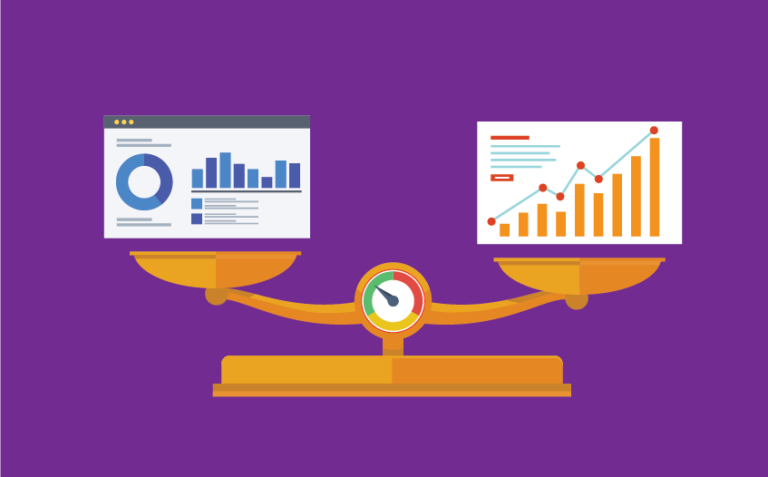Measuring the Effectiveness of eLearning: Metrics and Analytics

eLearning has revolutionised the way businesses deliver training. Whether upskilling employees, enhancing compliance, or onboarding new team members, eLearning provides flexibility, accessibility, and cost-efficiency. However, one critical question remains: how can we measure the effectiveness of our eLearning programmes? How do we know if these programmes are making an impact?
This is where metrics and analytics come into play. Tracking the right metrics allows you to understand the outcomes of your eLearning initiatives, identify areas for improvement, and maximise your return on investment. In this blog, we will explore the key metrics for measuring the effectiveness of eLearning, the role of analytics, and how a Learning Management System (LMS) like SeamsCloud can help you make data-driven decisions.
Why Measure eLearning Effectiveness?
The primary aim of eLearning is to deliver learning experiences that are engaging, effective, and capable of improving performance. Measuring its effectiveness allows you to:
- Identify Learning Gaps: Highlight where learners may be struggling and make adjustments.
- Optimise Courses: Improve course content, format, or structure based on insights.
- Demonstrate ROI: Show how training initiatives translate into improved business performance and productivity.
- Increase Engagement: Tailor content to better meet learner needs and keep them engaged throughout the programme.
Key Metrics for Measuring eLearning Effectiveness
There are several metrics you can track to gauge the impact of eLearning initiatives. Here are the most important ones to consider:
1. Completion Rates
Completion rates are among the simplest indicators of how well learners are engaging with a course. If a high percentage of participants complete the course, this suggests they found the material relevant and achievable. Conversely, low completion rates may indicate disengagement, lack of motivation, or even technical issues with the course.
- Track Learner Drop-Off Points: Analysing where learners drop off can help pinpoint specific challenges within the course content or structure.
2. Learner Engagement
Engagement metrics provide insight into how actively participants are interacting with your eLearning content. Key indicators of engagement include:
- Time Spent on Each Module: Longer time spent may suggest high interest or, in some cases, difficulty with a particular topic.
- Content Interaction: Tracking clicks, video views, quiz attempts, and discussion participation can help gauge interest and engagement levels.
Engagement metrics are important for determining whether learners are actively processing the material or simply rushing through to complete the course.
3. Assessment Scores
Assessments are essential to determine if learners are absorbing and understanding the content. Pre- and post-course quizzes, tests, and interactive assessments provide valuable information about learner progress.
- Before and After Comparison: Comparing scores from pre-course and post-course assessments helps evaluate whether the course delivered the desired knowledge and skill improvements.
- Assessment Attempts: Tracking how many attempts learners need to pass a test helps identify areas where course content might need to be reinforced or clarified.
4. Knowledge Retention Rates
Knowledge retention metrics help determine whether the knowledge gained during a course is being retained over time. Some effective ways to measure retention include:
- Follow-Up Assessments: Conducting assessments several weeks or months after course completion can provide insight into how well knowledge is retained.
- On-the-Job Performance: Managers can provide feedback on whether learners are applying their new knowledge and skills in practical situations.
5. Learner Feedback
Surveys and feedback forms give learners the chance to share their perspectives on the course. Their feedback can cover areas like content relevance, usability, pacing, and the overall experience.
- Qualitative Insights: Learners’ feedback helps identify gaps or barriers in content delivery and can provide suggestions for improvement.
- Engagement Satisfaction: Satisfaction surveys give you insight into how well-received your training is, contributing to a better understanding of its effectiveness.
6. Behavioural and Performance Metrics
Ultimately, the goal of eLearning is to change behaviours or improve performance. Tracking on-the-job behavioural changes or performance metrics post-training can be a strong indicator of a course’s effectiveness.
- Performance Reviews: Work with managers to track improvements in skills or behaviours linked to the training.
- KPIs Improvement: Link eLearning to key performance indicators (KPIs) like productivity, quality, or compliance to understand its impact on business goals.
The Role of Analytics in eLearning Effectiveness
Analytics play a crucial role in understanding eLearning effectiveness. By diving deeper into the data, you can go beyond surface-level metrics to gain richer insights. A Learning Management System (LMS) like SeamsCloud offers powerful analytics capabilities that provide valuable data on learner behaviour, engagement, and outcomes.
- Data-Driven Decisions: Analytics help you make data-driven decisions about what works and what doesn’t, enabling ongoing improvement of your eLearning programmes.
- Real-Time Insights: With an LMS like SeamsCloud, you can access real-time data and make timely adjustments to ensure your eLearning content is effective and engaging.
How SeamsCloud LMS Helps Measure eLearning Effectiveness
SeamsCloud LMS is a powerful tool for measuring the success of your eLearning initiatives. Here’s how SeamsCloud can make tracking and improving eLearning effectiveness effortless:
1. Comprehensive Reporting and Analytics
SeamsCloud provides in-depth reporting features that give you a clear overview of your eLearning outcomes. You can track key metrics like completion rates, assessment scores, and learner engagement with just a few clicks.
- Customisable Reports: Get the specific data you need to gauge the effectiveness of your courses.
- Visual Insights: Visual charts and graphs help you quickly understand trends in learner engagement and performance.
2. Track Real-Time Engagement
With SeamsCloud, you can track learner engagement in real-time, allowing you to quickly identify when a course may not be meeting expectations and take corrective action. This could mean updating content, changing course structure, or providing additional support to learners.
3. Automated Data Collection
Forget the hassle of manual tracking. SeamsCloud automates data collection so that you have access to accurate records, anytime you need them. This reduces administrative burden and ensures that your data is both accurate and readily available.
4. Actionable Insights for Continuous Improvement
With SeamsCloud’s data and analytics, you gain actionable insights into your eLearning programmes. These insights can help you make targeted improvements, ensuring your courses remain relevant, engaging, and effective in achieving learning objectives.
SeamsCloud: Your Partner in eLearning Success
At SeamsCloud, we understand that the success of any eLearning initiative lies in both the quality of the content and the ability to track and measure its impact. That’s why we created SeamsCloud LMS, a robust LMS designed to simplify eLearning management and provide you with powerful tools to measure and improve effectiveness.
With SeamsCloud LMS, you can:
- Track completion rates, engagement metrics, and assessment scores effortlessly.
- Gain detailed analytics to help identify what’s working and what needs improvement.
- Automate tracking and data collection to free up time and improve accuracy.
- Keep learners engaged with intuitive dashboards and interactive content.
Ready to see the true impact of your eLearning programmes? Discover how SeamsCloud LMS can help you measure, optimise, and achieve outstanding eLearning results.

